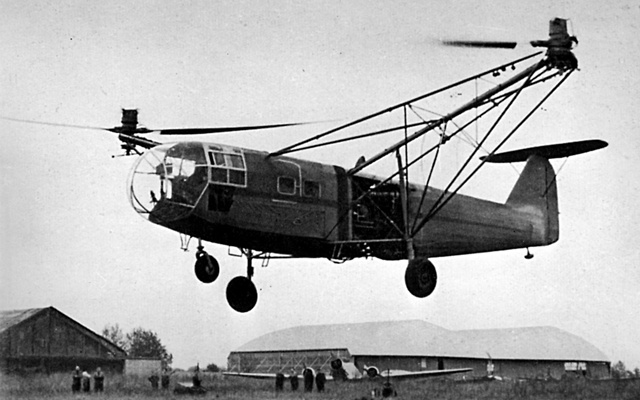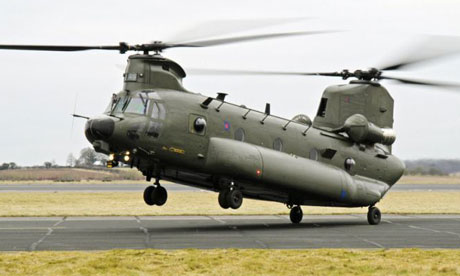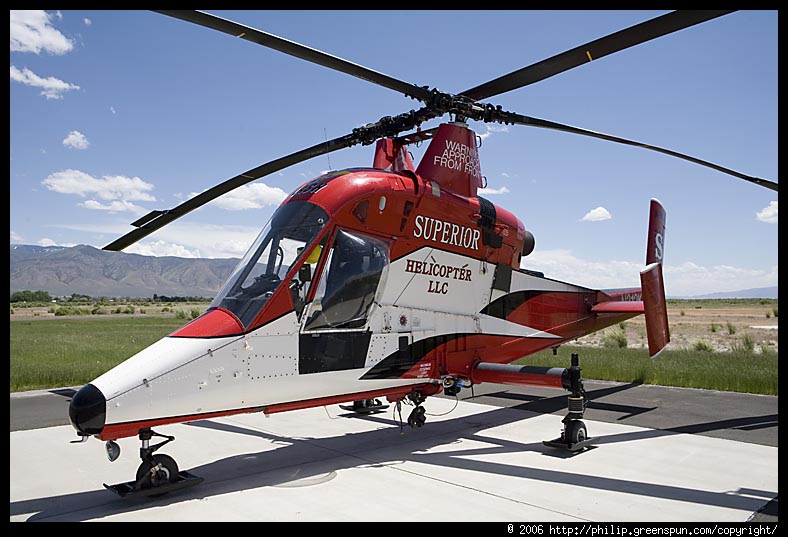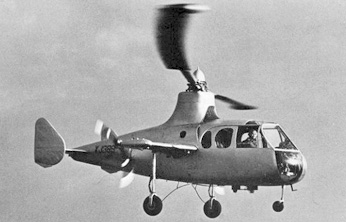Helicopters with no tail rotors..?
Discussion
I was watching some air ambulance program the other night, and noticed the helicopter had no tail rotor. How can that work? Surely there needs to be something to counteract the torque from the main rotors - or is it just well hidden inside the fuselage?
I'm trying to find a photo of the copter I mean, but can't find one as I don't even know the name of it. Can anyone help?
I'm trying to find a photo of the copter I mean, but can't find one as I don't even know the name of it. Can anyone help?
McDonnell Douglas "NOTAR" Explorer

There is a high speed fan in the tail boom, and a rotating slot at the end of the tail that controls the direction of the air, to counteract the torque.
NOTAR was originally developed by Hughes http://en.wikipedia.org/wiki/NOTAR

There is a high speed fan in the tail boom, and a rotating slot at the end of the tail that controls the direction of the air, to counteract the torque.
NOTAR was originally developed by Hughes http://en.wikipedia.org/wiki/NOTAR
Something along the lines of this? http://en.wikipedia.org/wiki/Kamov_Ka-26
Uses an additional counter-rotating main rotor to balance the craft I believe.
Uses an additional counter-rotating main rotor to balance the craft I believe.
Quite a lot of helicopter designs do not use tail rotars. The bulk of these alternative methods of neutralising torque depend on two rotors rotating in opposite direction. These can be mounted seprately or together. If together, they can be intermeshing or in a biplane configuration, Here are some examples of twin rotor styles -




The Defender is single rotor and uses what is called the Coanda Effect instead of a tail rotor to counteract torque. Air is bled from the engine through a rotatable slot in the tail boom. The airflow from the slot creates differing levels of pressure on one side opf the boom. Varying the slot angle allows the helicopter to rotate.
The main advantages are that it is quieter than a tail rotor and is claimed to be safer as there is less mechanical complexity in the design.




The Defender is single rotor and uses what is called the Coanda Effect instead of a tail rotor to counteract torque. Air is bled from the engine through a rotatable slot in the tail boom. The airflow from the slot creates differing levels of pressure on one side opf the boom. Varying the slot angle allows the helicopter to rotate.
The main advantages are that it is quieter than a tail rotor and is claimed to be safer as there is less mechanical complexity in the design.
Zad said:
McDonnell Douglas "NOTAR" Explorer
There is a high speed fan in the tail boom, and a rotating slot at the end of the tail that controls the direction of the air, to counteract the torque.
NOTAR was originally developed by Hughes http://en.wikipedia.org/wiki/NOTAR
Don't some designs use vectored exhaust gas through the boom instead? There is a high speed fan in the tail boom, and a rotating slot at the end of the tail that controls the direction of the air, to counteract the torque.
NOTAR was originally developed by Hughes http://en.wikipedia.org/wiki/NOTAR
http://knol.google.com/k/josh-haines/no-tail-rotor...
BTW most of the conventional helicopter's noise is attributed to the T/R.
BTW most of the conventional helicopter's noise is attributed to the T/R.
Edited by Geneve on Wednesday 26th October 09:56
There's also the X3, which looks like the result of an unfortunate accident.

http://www.youtube.com/watch?v=cPYKktIdvoM&fea...
It uses differental thrust from the two forward props to counter the torque, although the main aim is to improve maximum speed and range

http://www.youtube.com/watch?v=cPYKktIdvoM&fea...
It uses differental thrust from the two forward props to counter the torque, although the main aim is to improve maximum speed and range
Eric Mc said:
The Defender is single rotor and uses what is called the Coanda Effect instead of a tail rotor to counteract torque. Air is bled from the engine through a rotatable slot in the tail boom. The airflow from the slot creates differing levels of pressure on one side opf the boom. Varying the slot angle allows the helicopter to rotate.
The main advantages are that it is quieter than a tail rotor and is claimed to be safer as there is less mechanical complexity in the design.
It's not air bled from the engine, it's from a seperate fan at the front of the boom.The main advantages are that it is quieter than a tail rotor and is claimed to be safer as there is less mechanical complexity in the design.
HOGEPH said:
rhinochopig said:
Don't some designs use vectored exhaust gas through the boom instead?
Tip jets for the Djinn.
dr_gn said:
Eric Mc said:
The Defender is single rotor and uses what is called the Coanda Effect instead of a tail rotor to counteract torque. Air is bled from the engine through a rotatable slot in the tail boom. The airflow from the slot creates differing levels of pressure on one side opf the boom. Varying the slot angle allows the helicopter to rotate.
The main advantages are that it is quieter than a tail rotor and is claimed to be safer as there is less mechanical complexity in the design.
It's not air bled from the engine, it's from a seperate fan at the front of the boom.The main advantages are that it is quieter than a tail rotor and is claimed to be safer as there is less mechanical complexity in the design.
Zad said:
McDonnell Douglas "NOTAR" Explorer

There is a high speed fan in the tail boom, and a rotating slot at the end of the tail that controls the direction of the air, to counteract the torque.
NOTAR was originally developed by Hughes http://en.wikipedia.org/wiki/NOTAR
That's the one! 
There is a high speed fan in the tail boom, and a rotating slot at the end of the tail that controls the direction of the air, to counteract the torque.
NOTAR was originally developed by Hughes http://en.wikipedia.org/wiki/NOTAR
I've read up a little on Wiki about these, and it's pretty fascinating. If I understood it correctly, as well as having a "fan" pushing air out the tail, the actual boom/shaft is like a wing on its side? This way, the downwash from the main rotor flows over the wing design and creates "lift", albeit at 90 degrees to how a normal wing would work, creating a force in the opposite direction to counter the torque?
I'd never heard about this, and spent a good hour on Wiki reading about helicopter designs today. Awesome

Gassing Station | Boats, Planes & Trains | Top of Page | What's New | My Stuff








